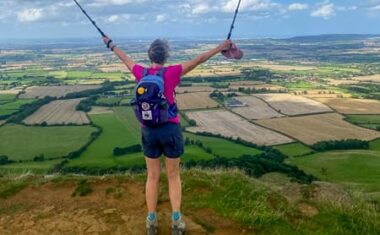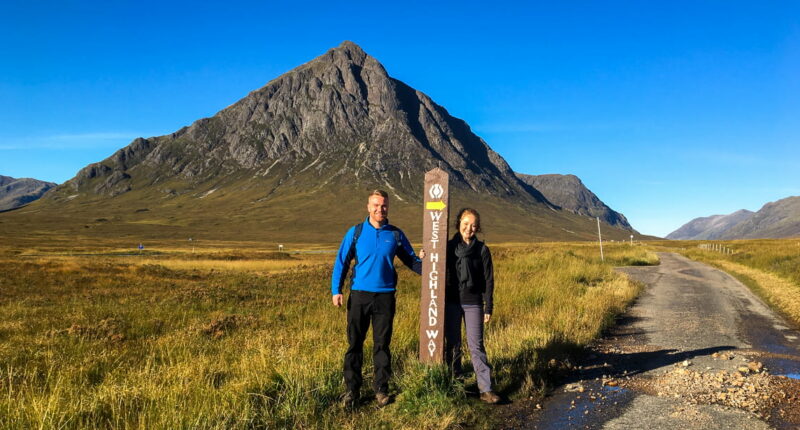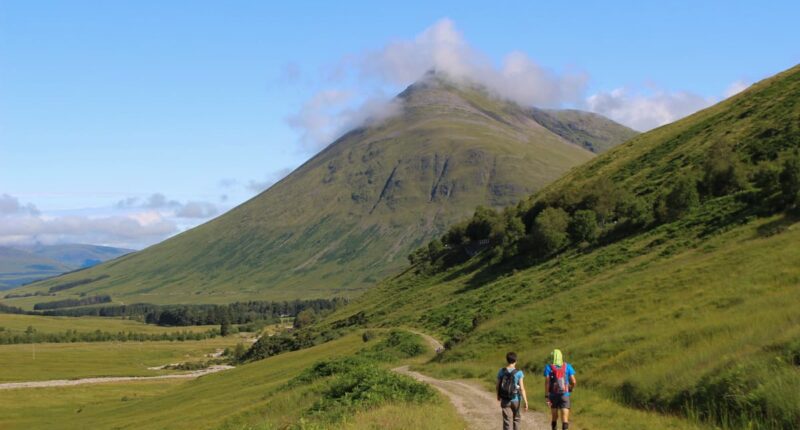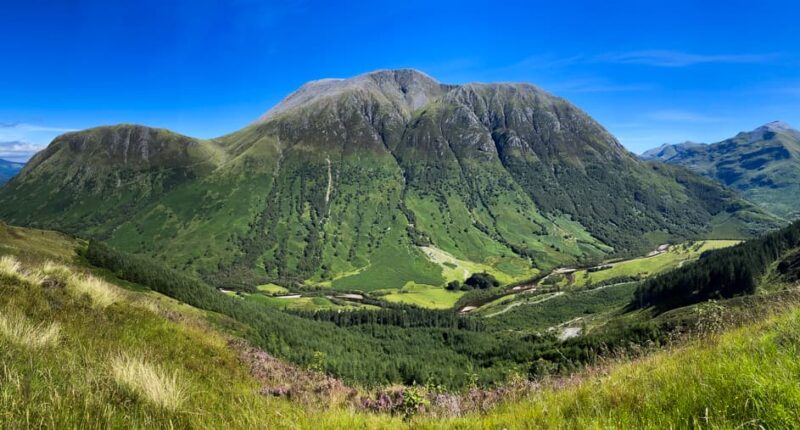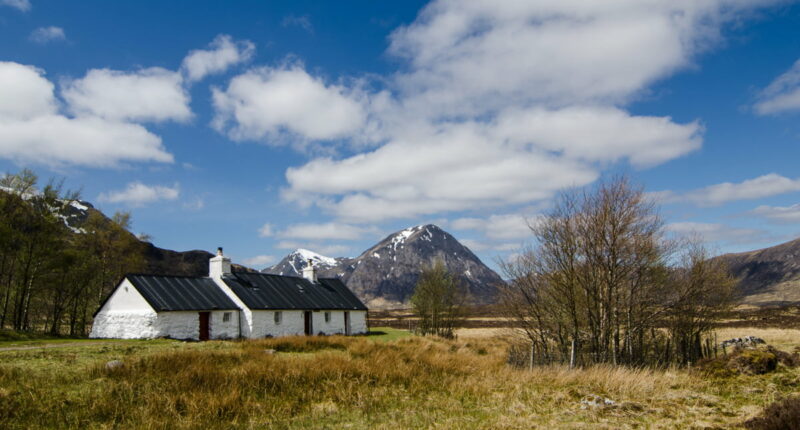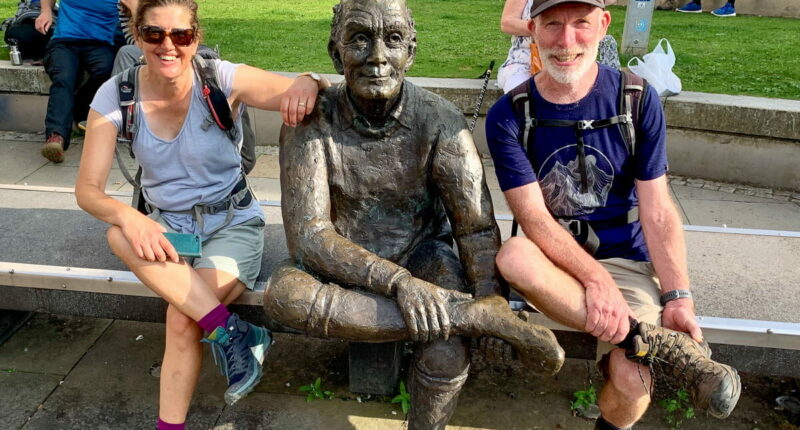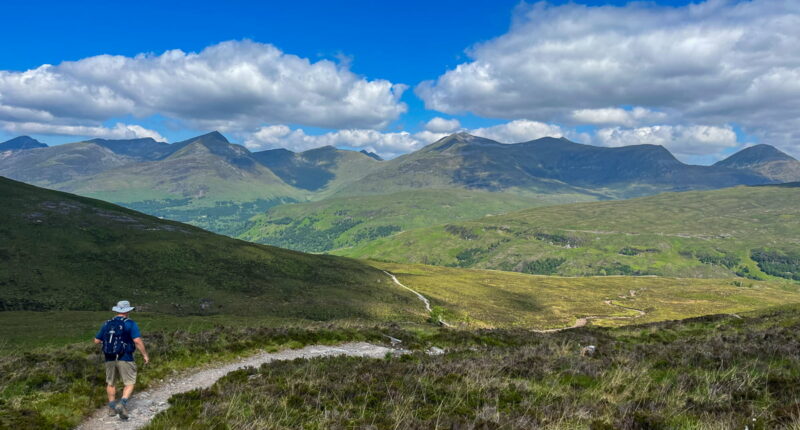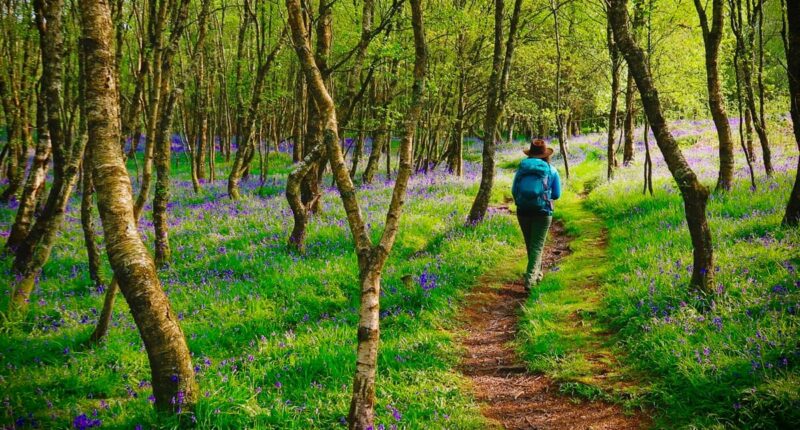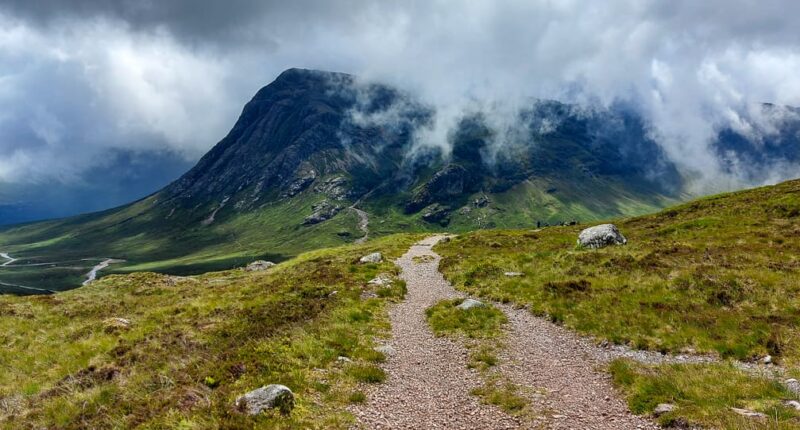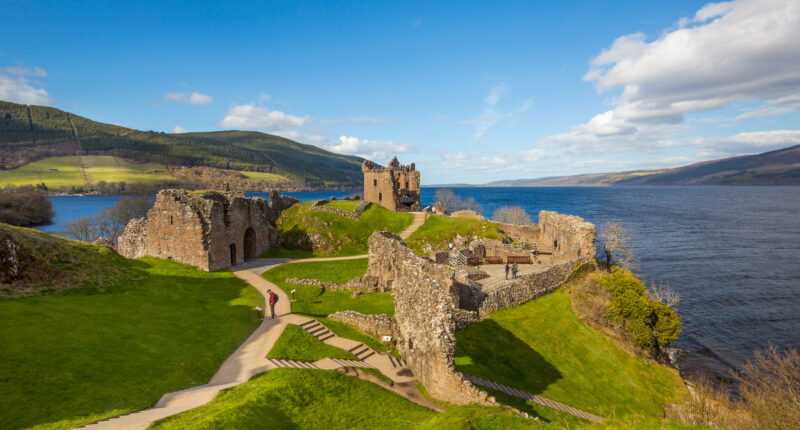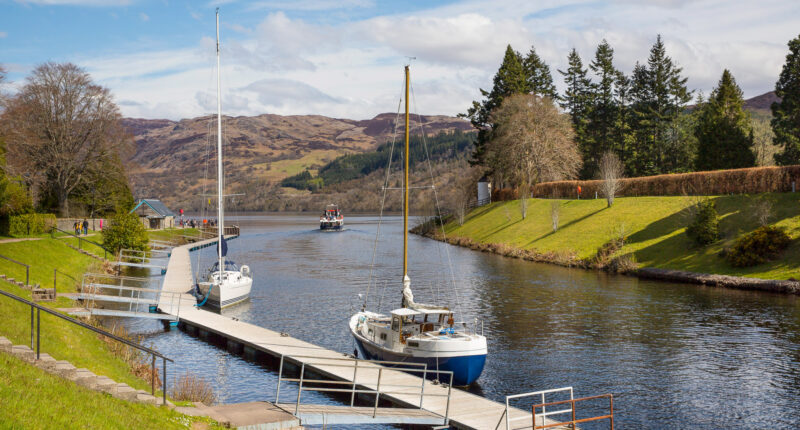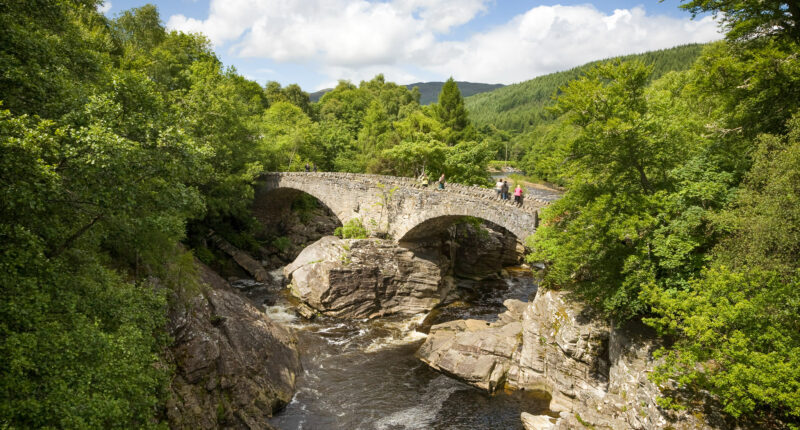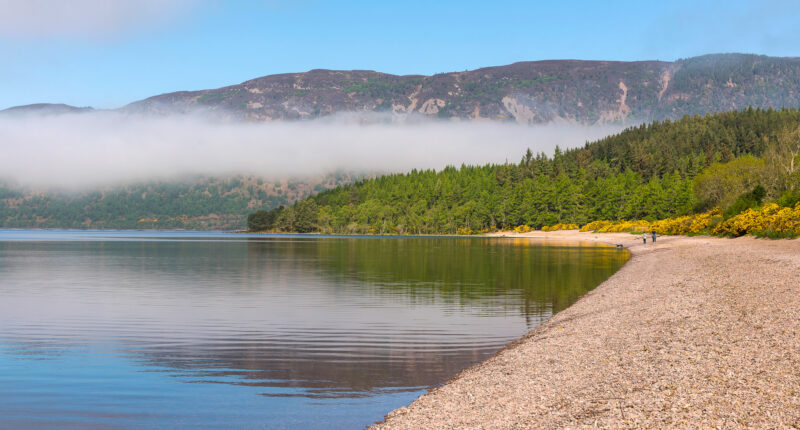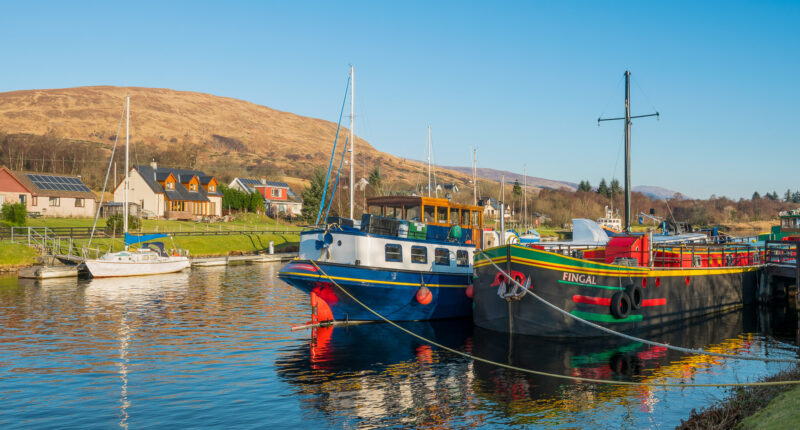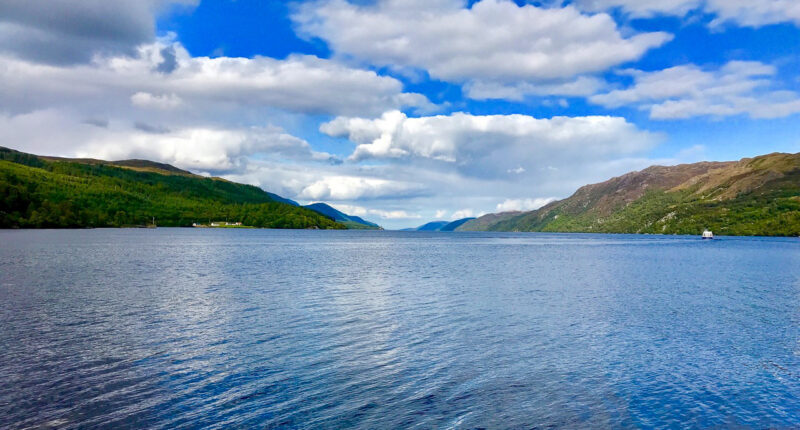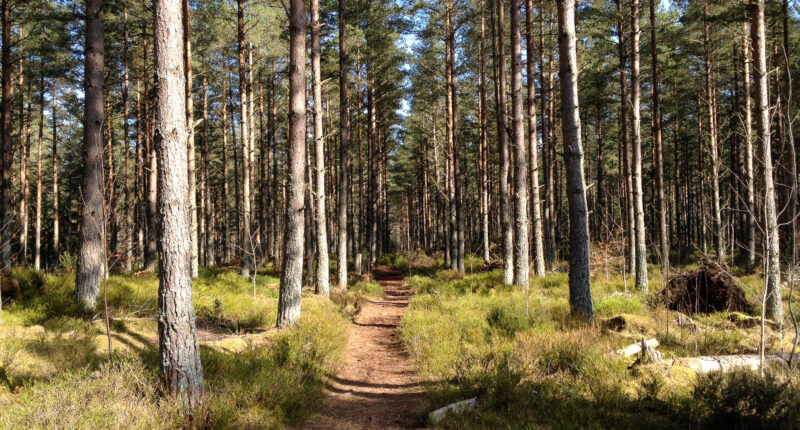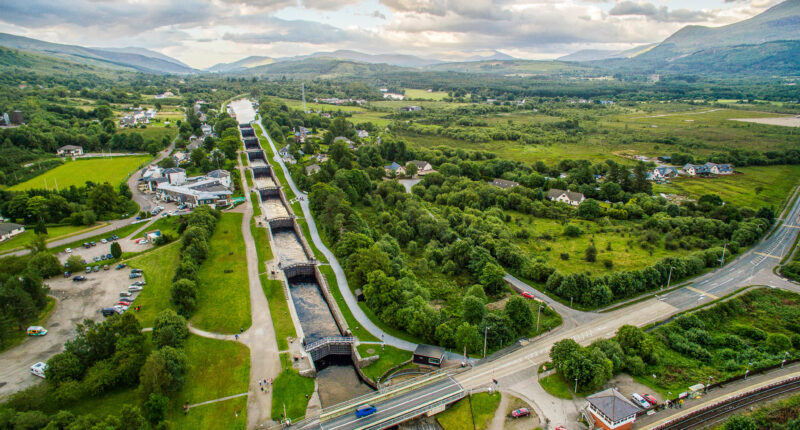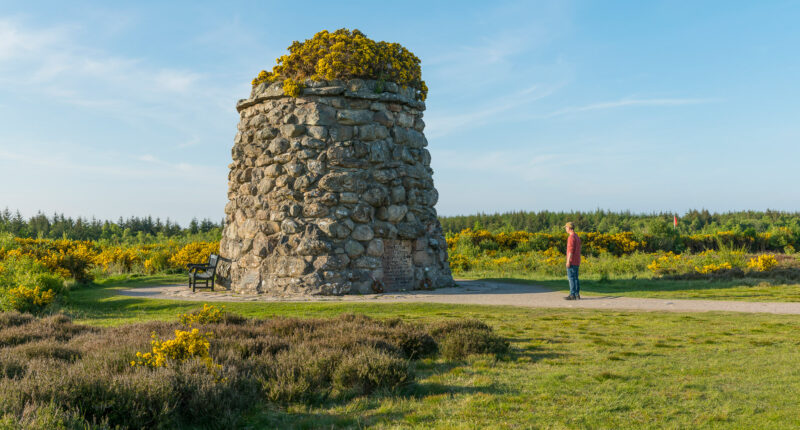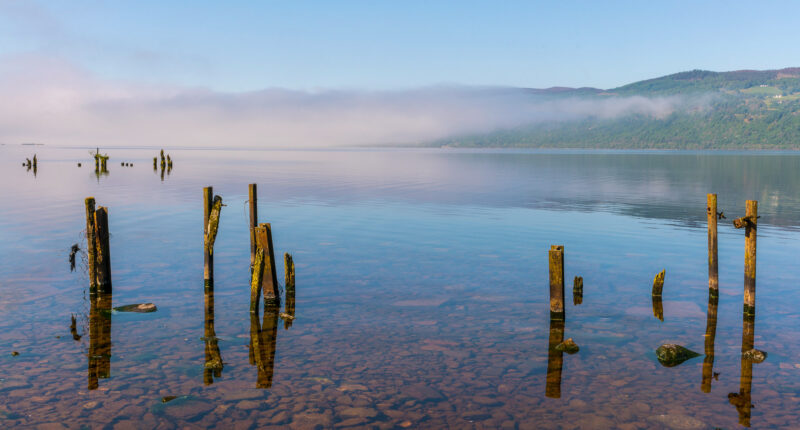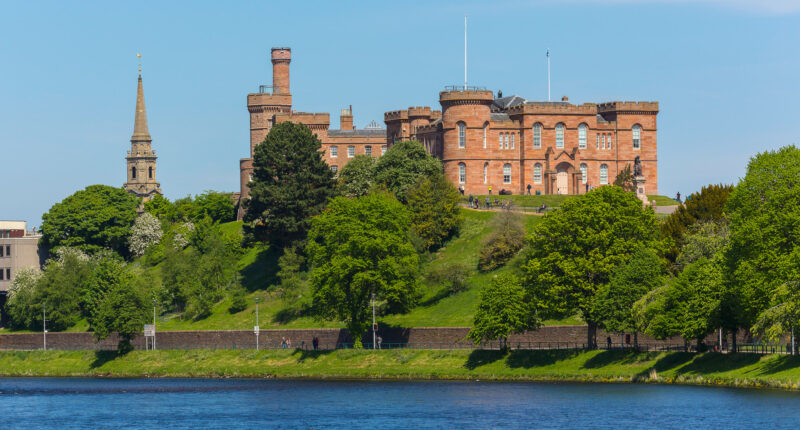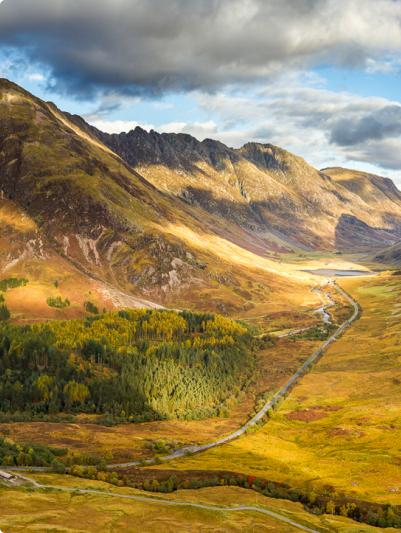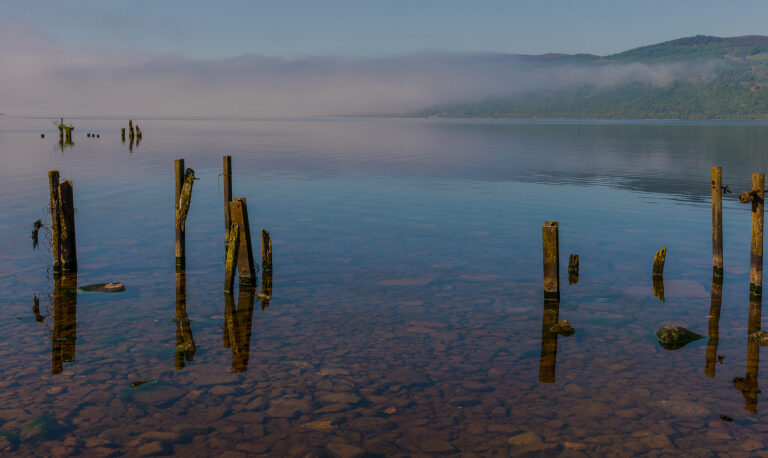Offa’s Dyke Path
Overview
- Prices from: £1505 per person
- Start: Chepstow, Monmouthshire
- Finish: Prestatyn, Denbighshire
- Availability: Any start date from April to October
- Grading: Strenuous
- Way-marked: Yes
Offa’s Dyke Path Highlights

The challenge
Read moreTake on the challenge of walking the length of Wales from south to north, crisscrossing the ancient borderland between England and Wales.

Picturesque towns and villages
Read moreVisit border towns and attractive villages including Monmouth, Hay-on-Wye, Knighton, Montgomery and Welshpool.

Charming Chepstow
Read moreSpringing up around the Norman castle built at a strategic point overlooking the River Wye, Chepstow was a major medieval powerhouse. Nowadays, it’s a lively town that combines the best of ancient and modern Wales.

Shropshire Hills
Read moreChallenge yourself as you walk through the beautiful Shropshire hills, taking in the magnificent views all around.

Wye Valley
Read moreWalk in the wonderful Wye Valley and discover a book-lovers’ paradise at Hay-on-Wye.

Historic castles and abbeys
Read moreExplore historic castles and abbeys dotted along the trail including the magnificent Powis Castle at Welshpool, and the 12th-century Cistercian abbey at Tintern.
Discover the Historic Borderland of England & Wales
The Offa’s Dyke Path is a popular National Trail which stretches 177 miles from the Severn Estuary near Chepstow to the coast of north Wales at Prestatyn. This diverse route passes through no less than 8 different counties and crosses the border between England and Wales over 20 times.
Offa’s Dyke is believed to date from the late 8th century, when King Offa ordered a great dyke to be built to mark the western boundary of his kingdom with Wales stretching from sea to sea. In places, it is still visible as a bank up to 25-feet high with a deep ditch alongside.
The path explores the tranquil Marches and passes through the Brecon Beacons National Park on the spectacular Hatterall Ridge. In addition, it links no less than three Areas of Outstanding Natural Beauty—the Wye Valley, the Shropshire Hills and the Clwydian Hills.
For over half its length, the route keeps company with Offa’s Dyke but the landscape varies throughout the journey. It passes through remarkable scenery of great beauty and variety, ranging from the woodlands of the spectacular Wye Gorge to the windswept ridges of the Black Mountains and from the rolling hills and secluded valleys of mid-Wales to the heather-clad Clwydian Hills.
Along the way, it also visits a succession of historic border towns and attractive villages including Monmouth, Hay-on-Wye, Knighton, Montgomery and Welshpool. The walled towns, castles and remains of fortifications are visually stunning and of great historical interest. These include Chepstow Castle, the first stone fortress built in Wales, Tintern Abbey on the banks of the River Wye and one of the greatest monastic ruins of Wales, and the magnificent Powis Castle at Welshpool.
Offa’s Dyke Path Route Map
Recommended Itinerary
Our most popular itinerary is ODP2 which covers the route in 13 days / 14 nights.
Travel to Chepstow for your first night’s accommodation
Read moreArrive in Chepstow and spend the evening at your first night’s accommodation.
Day 1: Chepstow to Redbrook (13 miles / 21 km)
Read moreFrom the bridge by Chepstow Castle follow a well-marked trail northwards for the day. Chepstow Castle dates from 1067 and is open throughout the year.
The path is often high above the river affording good views of the wooded valley. You will pass by Tintern Abbey, founded in 1131 by monks of the Cistercian Order before you arrive in Redbrook which overlooks the River Wye.
Day 2: Redbrook to White Castle (15 miles / 24 km)
Read moreFrom Redbrook you climb above the River Wye before the route descends into Monmouth, a lovely historic town with a castle and beautiful 13th-century gatehouse on the bridge over the River Monnow.
From here you follow field and woodland paths through a picturesque rural landscape to Llantilio Crossenny, before ending your day at White Castle, a 12th century Norman stronghold. You will spend the night in the nearby town of Abergavenny.
Day 3: White Castle to Longtown or Llanthony (11.5 miles / 18.5 km)
Read moreThis morning you will return to White Castle, where your route crosses farmland, which accompanies you by way of Llangattock Lingoed and Pandy. Then it’s a long, steady climb up onto the panoramic Hatterall Ridge to the first summit of the Black Mountains (464m) followed by an easy, gradual climb to the highest point (703m).
Depending on availability, you will spend the evening in either Llanthony – with its famous Priory, or Longtown – a lovely village in the Olchon Valley.
Day 4: Longtown or Llanthony to Hay-on-Wye (13 miles / 21 km)
Read moreA steep climb this morning take you back to rejoin the ridge, which follows not only the English/Welsh border but the boundary of the Brecon Beacons National Park. This superb ridge walk ends at Hay Bluff from where there is a fantastic view north over Hay and the Wye Valley and west towards the Brecon Beacons. From here you descend steeply and mostly through farmland to the border town of Hay-on-Wye.
Hay-on-Wye is a pretty little town, famous for its wealth of second-hand book shops. There are bookshelves on the street and in back yards, on walls and in tin sheds, in a cinema, in gardens, cafes, and the biggest of all is in the castle!
Day 5: Hay-on-Wye to Kington (14 miles / 22.5 km)
Read moreThis is an enjoyable day of contrasts which stays on the Welsh side of the border for most of the day. It takes you along the River Wye, through a short stretch of forest and up onto a couple of lovely stretches of the moor before descending to Kington.
Day 6: Kington to Knighton (14 miles / 22.5 km)
Read moreOffa’s Dyke is your constant companion today. Although hilly the walk is relatively straightforward with superb views and features some of the best-preserved examples of the dyke along the whole route. A steep descent brings you into the small town of Knighton.
Half way! Knighton`s Welsh name, Tref-y-Clawd, is Town on the Dyke, indicating that Offa’s Dyke actually passes through the town. Suitably enough, the Offa’s Dyke Centre opened here in 1999.
Day 7: Knighton to Brompton (15 miles / 24 km)
Read moreThis section of Offa’s Dyke is bleak and challenging and perhaps the hardest day of the walk. The relentless pattern of hills means steep climbs, a relatively level section of the ridge then a steep drop, followed by another brutal climb. Nevertheless, the scenery is spectacular.
The section of the route near Llanfair Hill is often regarded as the finest on the route, both for seeing the dyke and for the views. We recommend an early start to allow for plenty of rest stops
Day 8: Brompton to Welshpool (12 miles / 19 km)
Read moreToday is on the easy side after the hills of the previous day with pleasant, flat walking which gradually builds to steep ascents. A short detour can be made into the delightful town of Montgomery, overlooked by its castle ruins.
Long Mountain dominates the skyline in front of you. Follow the Roman road up Long Mountain before branching off through woodland to Beacon Ring Iron Age hill fort. From here you descend to Buttington, before continuing to your accommodation in Welshpool; a 13th-century market town that developed under the protection of Powis Castle.
Day 9: Welshpool to Trefonen (16.5 miles / 26.5 km)
Read moreFrom Buttington, Offa’s Dyke Path follows the River Severn northwards for a considerable distance. This flattish day then takes you by way of Four Crosses on to Llanymynech, where the English/Welsh border runs down the main street.
Passing through the villages of Porth-y-waen and Nantmawr, you climb once more to take in the fine views from Moelydd (285m). You will spend the evening in nearby Oswestry.
Day 10: Trefonen to Llangollen (15.5 miles / 25 km)
Read moreFrom the hills, you return to tourist territory in Llangollen, a bridging point of the River Dee.
The section along Craig Forda to the former Oswestry Racecourse is delightful in all seasons and ahead is Chirk Castle, a magnificent 14th Century home. The route then takes you through an area dominated by remnants of the industrial age of the early 19th Century. There is a fine railway viaduct on the Wrexham line, the Llangollen Canal and best of all the towering 120-foot arches of Thomas Telford’s Pontcysyllte canal aqueduct constructed in 1805.
Day 11: Llangollen to Clwyd Gate (13.5 miles / 21.5 km)
Read moreThen you return to the magnificent countryside with the superb Eglwyseg ridge above Llangollen. Beyond the Eglwyseg Mountain, another climb takes you into the Llandegla Forest before descending into the attractive village of Llandegla.
From the base of Moel y Waen it’s a steady climb to the top of Moel y Plas. From the top of Moel Llanfair, the view into the valley below is dominated by the Denbighshire town of Ruthin with its red stone castle. You will spend the evening in nearby Llanferres.
Day 12: Clwyd Gate to Bodfari (11.5 miles / 18.5 km)
Read moreAfter being transferred back to Clwyd Gate, your penultimate day on Offa’s Dyke Path continues as you make your way through the wild beauty of the heather-covered moors along the Clwydian Range. You will climb to reach Moel Famau, the highest point of these hills at 544m and topped by the ruins of the Jubilee Tower, erected in 1810 to mark the jubilee of George III.
Further hills and accompanying hill forts lead you north before descending to the tiny village of Bodfari.
Day 13: Bodfari to Prestatyn (12 miles / 19 km)
Read moreThere are several stiff ascents to tackle on this final day but ahead are alluring coastal vistas as you head towards the coast at Prestatyn.
North of Rhuallt you gain expansive views of the sea to the north and west. A wonderful grand finale is the hair-raising section of path along a clifftop before descending to Prestatyn where your walk ends on award-winning sands.
Onward travel
Read moreAfter breakfast, you will start your journey home after a wonderful walking holiday on the Offa’s Dyke Path.
What’s Included?
Your Offa’s Dyke Path walking holiday includes:
- Carefully selected accommodation along the route and trail transfers when applicable
- En-suite or private bathroom facilities whenever possible
- Daily door-to-door baggage transfers
- Comprehensive information pack, kit list, guidebook and map (one set per room)
- Personalised itinerary with details of your accommodation, route and recommendations for lunch and dinner
- Traditional Welsh / English breakfast
- 24-hour emergency contact number
- Full financial protection
Your walking holiday doesn't include:
- Travel insurance
- Transport to and from the start and end of the walk
- Lunches and evening meals
Itineraries & Prices
We offer 5 suggested itineraries for walking Offa’s Dyke Path. Our most popular itinerary is ODP2 which covers the route in 13 days.
As well as the entire route, we also offer two shorter sections of the Offa’s Dyke Path: the South section (ODP4) and North section (ODP5) are both excellent walks in their own right, and give those with less time the opportunity to complete the trail over two stages.
 Average miles per day
Average miles per day
 Level of difficulty
Level of difficulty
 Average miles per day:
15 miles per day
Average miles per day:
15 miles per day
 Level of difficulty:
Strenuous
Level of difficulty:
Strenuous
 Average miles per day:
13.5 miles per day
Average miles per day:
13.5 miles per day
 Level of difficulty:
Strenuous
Level of difficulty:
Strenuous
 Average miles per day:
12 miles per day
Average miles per day:
12 miles per day
 Level of difficulty:
Strenuous
Level of difficulty:
Strenuous
 Average miles per day:
13.5 miles per day
Average miles per day:
13.5 miles per day
 Level of difficulty:
Strenuous
Level of difficulty:
Strenuous
 Average miles per day:
13.5 miles per day
Average miles per day:
13.5 miles per day
 Level of difficulty:
Strenuous
Level of difficulty:
Strenuous
Offa’s Dyke Path Accommodation
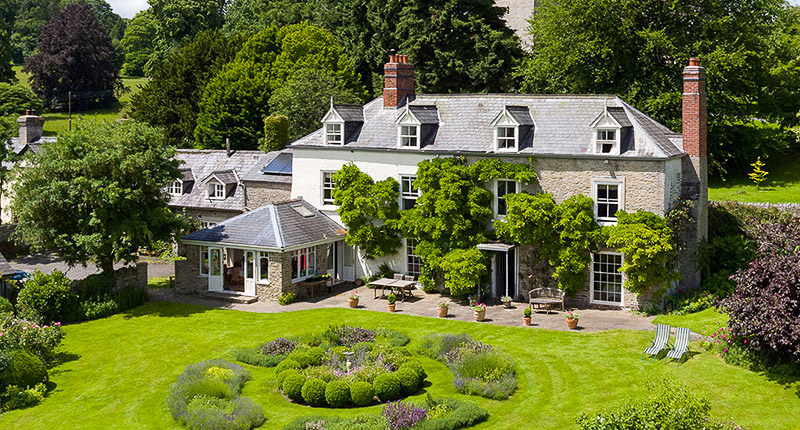


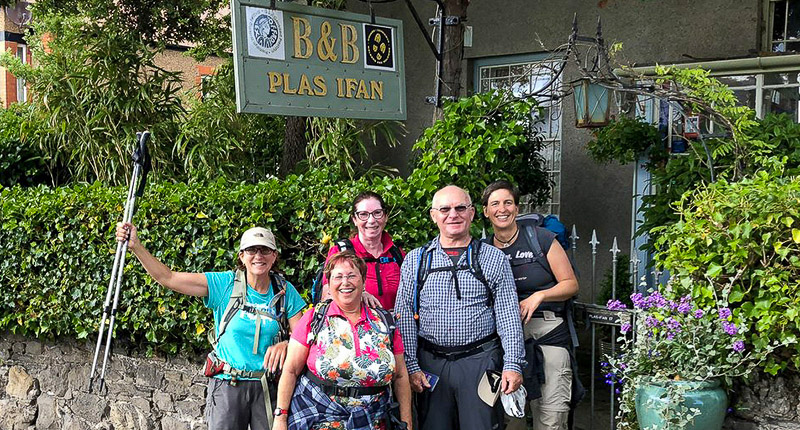
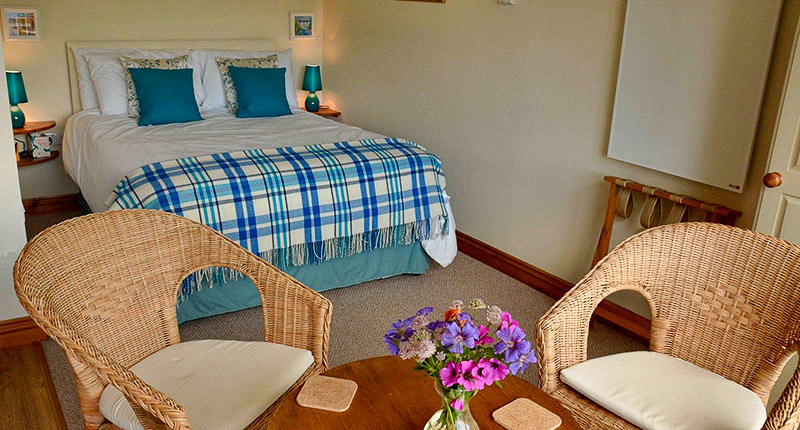
All of the accommodation that we reserve for you has been personally selected by our expert team to ensure it meets our exacting standards. We regularly review our extensive database.
We will always prioritise accommodation as close to the walking trail as possible. Occasionally, your accommodation may be located a short distance from the trail, or you may need to spend more than one night in the same place, in which case we will provide return transfers.
Travel Information
As an environmentally conscious tour operator, we actively encourage the use of public transport by providing clients with a detailed breakdown of travel options in their information packs. The following information may help with your pre-trip planning.
Getting to Chepstow
Nearest International Airports: London Heathrow or Cardiff
From London Heathrow you can take the Heathrow Express to London Paddington. There is a fast rail service from London Paddington to Chepstow (journey time 2 hours 50 min).
Alternatively, there are direct National Express coaches between London Heathrow and Chepstow (journey time 2 hours 10 min).
A frequent train service also runs between Cardiff and Chepstow (journey time 40 min).
Nearest Railway Station: Chepstow
Chepstow is well served by train and there are frequent services from London Paddington or Euston (journey time 2 hours 50 min) or from Cardiff (journey time 40 min). From the North, there are also direct trains from Birmingham (journey time 2 hours).
There are direct National Express buses from London Heathrow to Chepstow (journey time 2 hours 10 min) or from Cardiff to Chepstow (journey time 50 min).
If you plan to travel by car, it is sometimes possible to leave it at the start or end of your walk, for the duration of your holiday. We can check this for you when your booking is confirmed.
Departing from Prestatyn
Nearest International Airport: Manchester Airport
There is a direct train service which operates between Prestatyn and Manchester Airport (journey time 2 hours).
Nearest Railway Station: Prestatyn
There are regular trains from Prestatyn to Manchester. There are also one or two direct trains to London Euston each day (journey time 2 hours 35 min). From Manchester or London, you can connect with onward services throughout the UK.
National Express coach services serve Prestatyn direct to Liverpool (journey time 1 hour 35 min) or Birmingham (journey time 4 hours 30 min) from where you can connect to onward transport.
If you have left a car in Chepstow you can take a train from Prestatyn to Newport and connect with a service to Chepstow.
Additional Days
We would be delighted to arrange additional accommodation for you along Offa’s Dyke Path.
You may wish to plan a rest day or have an additional night at any of the locations along the route which offer activities or sightseeing opportunities – we’ve made some suggestions below. Please request this when you make an enquiry.

Hay-on-Wye
Read more- A good choice for a rest day, particularly if you are keen on books. There are bookshelves on the street and in back yards, on walls and in tin sheds, in a cinema, in gardens, cafes, and the biggest of all is in the castle!
- Canoe down the River Wye with Wye Valley Canoes

Knighton
Read more- Take in the half-timbered houses lining the attractive winding streets of Knighton
- Visit the Offa’s Dyke Centre

Llangollen
Read more- Relax by the canal in Llangollen – a pleasant old Welsh town with plenty to see and do
- Hop on board the Llangollen Railway and enjoy a scenic ride along the Dee Valley
- Enjoy a horse-drawn boat trip along the canal

Welshpool
Read more- Visit the magnificent Powis Castle and Gardens
- Ride the Welshpool and Llanfair Light Railway from Raven Square to Llanfair Caereinion
- Explore the Georgian buildings of Welshpool’s main streets
Make an enquiry
Offa’s Dyke Path
Need something more tailored?
Contact us via email:
enquiries@absoluteescapes.com
 Good quality and comfortable B&Bs, guest houses and some hotels located as close to the trail as possible. We will prioritise en-suite facilities or a private bathroom, although in remote areas with limited accommodation this may not always be possible.
Good quality and comfortable B&Bs, guest houses and some hotels located as close to the trail as possible. We will prioritise en-suite facilities or a private bathroom, although in remote areas with limited accommodation this may not always be possible.